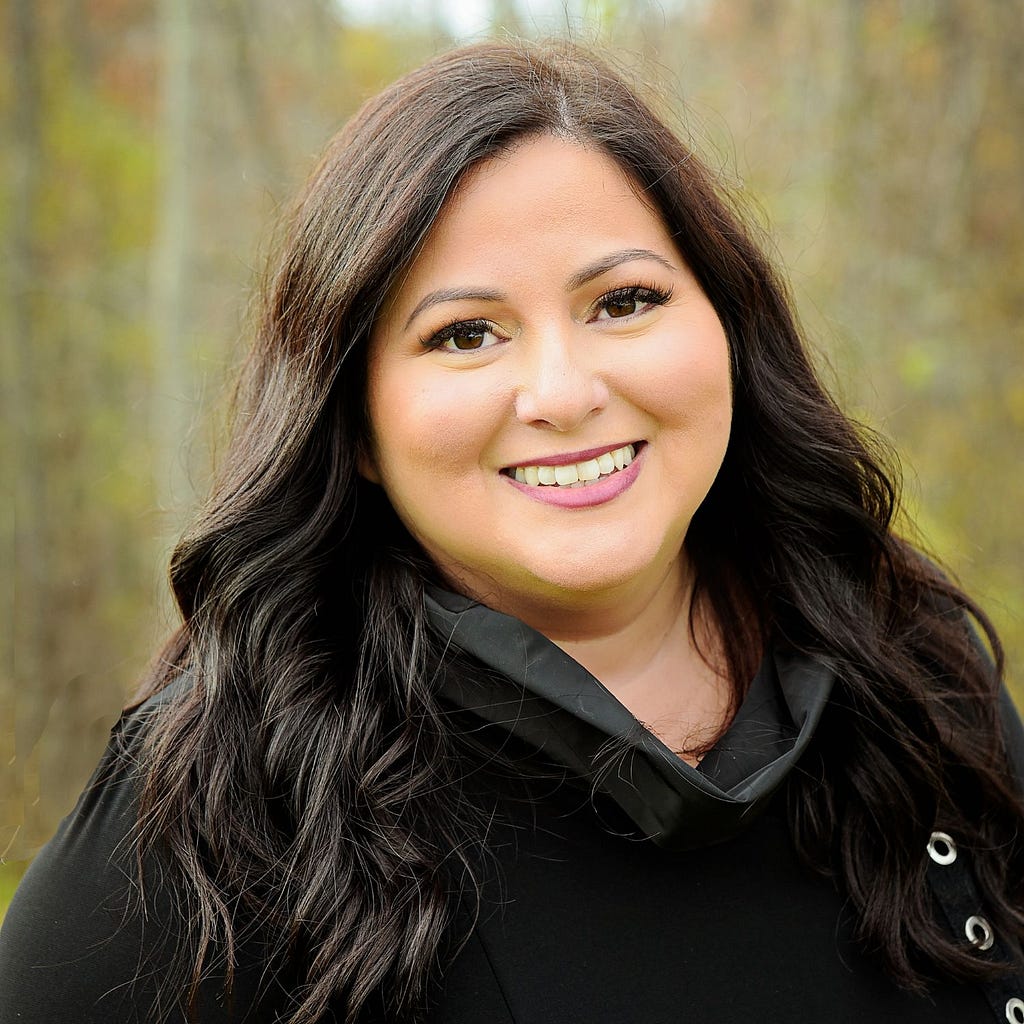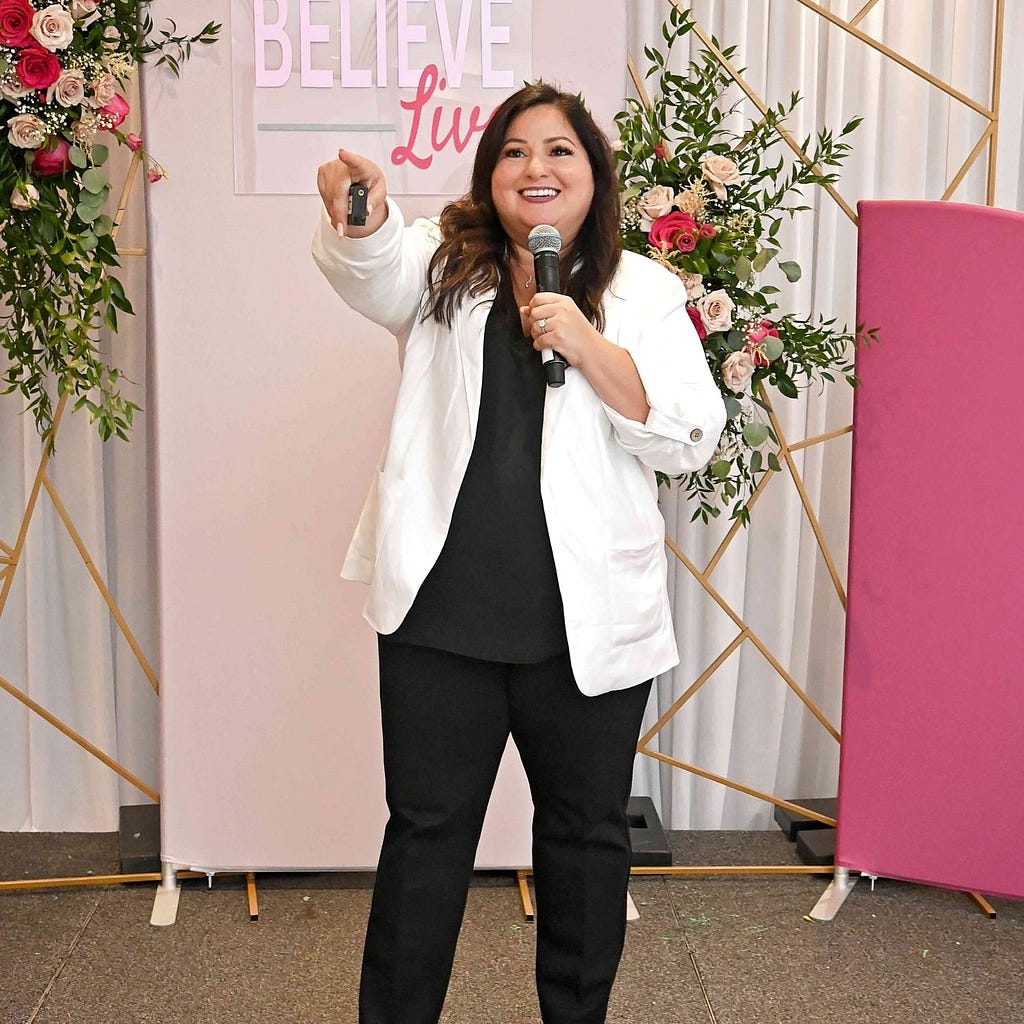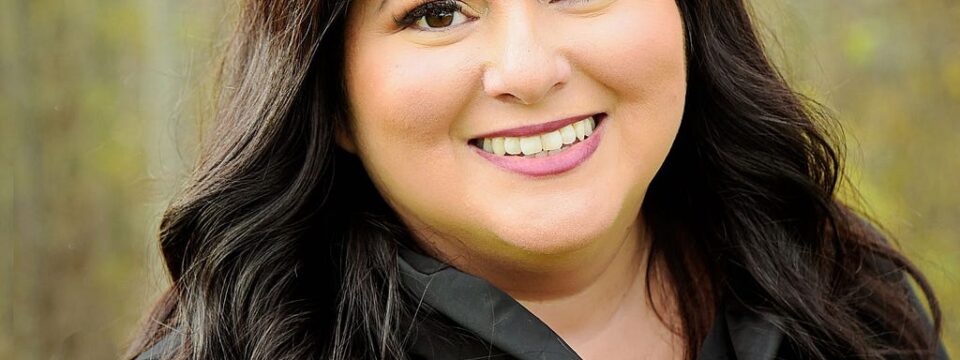TEDx Talking: Miriam Laundry On What You Need To Know To Secure, Prepare, and Deliver a Highly Effective TEDx Talk

An effective hook. They say it takes seven seconds for people to create their first impression of you. I’d argue that, when you’re on stage, it’s even shorter. Hook your audience with some kind of image, question, or interesting thought to get the most out of that first impression.
In a world that is more connected than ever, the power of a well-crafted message to inspire, educate, and evoke change cannot be understated. TEDx Talks have emerged as a prestigious platform for sharing ideas worth spreading, reaching a global audience and creating impact on a grand scale. In this series, we are discussing the process of delivering a TEDx Talk that resonates and leaves a lasting impression. We are talking with experts who have successfully navigated the TEDx journey, including TEDx speakers, speaking coaches with a focus on TEDx preparations, and organizers involved in the selection and coaching of speakers. As part of this series, we had the pleasure of interviewing Miriam Laundry.
Miriam Laundry is the founder of ML Publishing, the author of five bestselling and award-winning children’s books, a TEDx speaker, and a Guinness World Record holder. It is Miriam’s mission to give authors the knowledge and confidence they need to publish their children’s books and make a positive impact on the younger generation.
Now Miriam dedicates her time to helping writers get their books published and in the hands of the children who need it. Her company, ML Publishing, has published over 90 children’s books and counting.
Authors who partner with Miriam gain more than their first bestselling publication — they also gain lasting friendships, a strong community, and the courage to chase their dreams.
Miriam firmly believes quality children’s books can change the world. She has been featured on The Morning Show, Earn Your Happy with Lori Harder, and more. You can discover more about Miriam on her website.
Thank you so much for your time! I know that you are a very busy person. Our readers would love to “get to know you” a bit better. Can you tell us your “Origin Story”? Can you tell us the story of how you grew up?
I was born in Canada but moved to my family’s home country, Bolivia, at a young age. I was raised in Bolivia before moving back to Canada in my teen years.
My journey with writing and publishing didn’t really begin until 2012, soon after I had given birth to my fourth child. Around that time, my family suffered a tragedy — we lost my niece to suicide. As we coped with our loss and grief, my husband suggested attending a motivational seminar in the United States. It was exactly what I needed, so I went.
While attending, I was more than simply motivated. I was taught life-changing self-development strategies that I wish I’d known much earlier, and I wanted to pass those lessons on to my children. I wondered how best to do that and decided that a picture book would be most effective.
On the plane ride home, I wrote the first draft of what would eventually become my bestselling and Guinness-Award-winning picture book, I CAN Believe in Myself. That’s really where it all started.
Can you tell us a bit about what you do professionally, and what brought you to this specific career path?
After I wrote I CAN Believe in Myself on that plane ride home, I had tunnel vision for the success of this book. I needed children to be empowered by this message. With lots of hard work and after hiring my first ever staff member, I sold thousands of books, earned the Guinness World Record, and generated lots of buzz. At this time, my focus was still on writing and marketing my own children’s books.
But then my focus started to shift. Aspiring authors flooded my emails and calendar, wanting to pick my brain and find out how I did it. It wasn’t until my husband jokingly said, “you should charge people for the advice you’re giving them!” that I realized there was a need in the writing community. A need for mentorship.
I kept thinking, how many more children would I be able to reach if I helped these aspiring authors publish their books and achieve their goals?
The impact all those authors and all their books could have on young readers was too big to let pass by. So, I started Miriam Laundry Publishing, a business dedicated to mentoring aspiring children’s book authors so they have the skills, knowledge, and support needed to publish their picture books, which brings us to today.
Thank you for all that. Let’s now turn to the main focus of our discussions. Can you tell us a bit about your particular experience with TEDx talks?
Absolutely! After the success of my I CAN children’s book series, I was approached by a local high school to speak at their upcoming TEDx event. I’ll admit, I was a little nervous since I had never given that kind of a speech before, but I knew the opportunity was too great to pass up. So, I agreed.
Before we talk about the details, let’s consider the big picture. Preparing for a TEDx talk and securing it obviously requires a lot of mindshare, bandwidth, resources, and energy. From your personal experience, why is it worth it to invest all that to do a TEDx talk?
This is such a great question! Honestly, there are many reasons to put in the work and do a TEDx talk. You might leverage it later for marketing purposes, use it to build credibility, hone your public speaking skills, deliver an important message, and so on.
Personally, I saw this as an opportunity to reach a new audience. Up until I did the TEDx talk, my audience was children aged four to eight — the children interested in picture books. But this TEDx talk was hosted by a local high school, and lots of students were invited to attend. I wanted to share an empowering message with these teens, too.
It was also kind of a perfect coincidence. At the time when I was invited to do the TEDx talk, my teenage daughter was struggling with her self-confidence. She’d look at herself in the mirror and say things like “I have so many pimples” or “Why is my hair frizzy?” She’s always been a very kind girl, making sure to always be friendly to her peers. But in that moment, I realized something. I told her “You’re bullying yourself!”
That changed something in her, and I could see the impact that concept made. I knew more teens needed to hear this message to conquer that “inner critic”. So, when the TEDx talk came up, it was the perfect chance to share that message.
Ultimately, that’s why the TEDx talk was worth it — to empower those listening to stop bullying themselves, grow their confidence, and overcome that criticizing voice we all have inside. Even if only one teen was inspired, it was all completely worth it.
Now, let’s talk about the how. Can you describe the application process for becoming a TEDx speaker? What are some common challenges faced in the application process that our readers should be forewarned about?
To be honest with you, I was very fortunate in the sense that I didn’t need to apply. I remember setting up my vision board for that year and putting a small picture of TEDx on it without much thought. Later that year, I got an email with the invite.
Is there a website where you can apply for a TEDx talk? How do you apply and submit? How can you find out about all of the TEDx’s that are available?
Since I didn’t apply, I can’t speak to the TEDx application process, but I truly believe I was invited because of the impact I had made with my books and the Guinness World Record.
I would tell anyone wanting to apply for a TEDx talk to start generating buzz early on. Consider how you can make an impact in your local community and be top-of-mind when this kind of event comes to your city.
What strategies did you use or would you recommend to ensure that a talk is engaging and impactful?
I’d recommend a few things. First, be concise. Avoid circling thoughts around and going on tangents during your speech. As soon as the audience becomes confused, you’ll lose them.
Next, provide variety in your tone, sentence lengths, and stage presence. When we experience the same patterns over and over again, we start to ignore them. The last thing you want is to see your audience dozing off!
You can also use stories or props to make your speech visual. I used the story of my daughter throughout the speech and even brought a small mirror on stage to make it more dramatic.
My last recommendation is to be yourself. Don’t try to be someone else while you’re on that stage (the audience will see through your act). Be authentically you.
There’s a saying from Mark Twain about how it takes more time to prepare for a five-minute talk than for a two-hour talk. The point is that crystallizing an idea and using the exact words is much more difficult than a freeform talk. So, how does a person do that? How does a person boil down an idea into five minutes?
Yes, it can definitely feel challenging first to pick one idea to run with, but then to boil it down? That’s no easy task. But I’ve found this process much easier by considering a few tips.
- Keep the speech focused. Even if you think you’ve selected a single idea for your speech, comb through it again to make sure you’re not sneaking in any additional ideas or messages that might lengthen your talk. Besides, the more focused your talk is, the more likely your audience will remember it.
- Cut all the filler. You’d be surprised how much time words like “very” and “and” take up in a speech.
- Avoid repetition. In a longer speech, it might be appropriate to offer summaries and circle back to things you’ve mentioned earlier, but in a five-minute talk, it’s just not long enough. Let each of your ideas build upon the next one without needing to backtrack.
Most of us can think of maybe half a dozen different topics that they could speak about. How does a person choose, and say “Okay, this is the one for a TED talk”? How do they choose which of all their ideas should be the one?
Consider your audience. Which idea would mean the most to them? Which idea will they relate to? If you aren’t sure who your audience will be, then pick the idea that will resonate with the most people.
I’d also recommend leaning towards the idea you feel most passionate about. Which idea keeps popping up in the back of your mind, itching to get out? That’s the one.
Feedback is crucial in shaping a compelling TEDx talk. Can you describe how to seek out and incorporate feedback during the talk’s preparation? Who do you turn to for honest critiques, and how do you iterate on your presentation based on the feedback received?
Feedback is so incredibly important! Before the TEDx invitation landed in my inbox, I had finished a year of ToastMasters. As a part of the program, you have an evaluator who gives you feedback. When you deliver your final speech at the end, the other participants provide written feedback. This was invaluable to me.
Always be receptive to feedback. Search for it, and keep an open mind. Don’t be afraid of it.
Let’s talk about the actual delivery of an excellent TEDx Talk. Most people are scared of speaking in public. How do you manage the stage fright before the talk?
Not many people know this, but I actually delivered this speech five times before hitting the TEDx stage. I delivered it once in ToastMasters, a few times at local high schools, and pretty much wherever I could find an audience. I didn’t want the TEDx stage to be the first time I gave this speech. I wanted it to be second nature by the time the TEDx event rolled around.
What can a person do to ensure that people will remember the talk and that it won’t just go in one ear and out the other? Can you share how you gauge and adapt to audience reactions in real time during your talk to ensure maximum engagement?
For sure. As mentioned earlier, you’ll want to give lots of variability.
It also helps to weave in an anecdote or example, even if it’s brief. If the audience can create a mental image of what you’re saying, they’ll be way more engaged. Try to ground any abstract concepts in a tangible scene or story.
If you know who your audience will be, consider how you can appeal to their interests, needs, or niche. I know that when I hear the words “writer” or “author”, my ears perk up. Your audience will likely do the same when they hear those key interests.

Based on your experience or research, what are the “Five Things You Need To Deliver a Highly Effective TEDx Talk ”?
1 . An effective hook. They say it takes seven seconds for people to create their first impression of you. I’d argue that, when you’re on stage, it’s even shorter. Hook your audience with some kind of image, question, or interesting thought to get the most out of that first impression.
2 . A story or metaphor. As I’ve mentioned, I used my daughter’s story throughout my speech, brought a prop, and related my idea to the “inner critic” metaphor. These things make your talk visual and easier to grasp.
3 . A topic that relates to your audience. If you’re delivering a TEDx talk at a yoga event, don’t write a speech about nuclear physics. Make sure your speech will be relatable to your audience. I knew my audience would be mostly high school students, so I knew the topic of self-esteem would resonate.
4 . A satisfying ending. Leave your reader with some kind of call to action. They don’t necessarily need to get up and physically do something, but give them a thought to chew on. I ended my speech with a quote — something memorable and easy to recite.
5 . Practise, practise, practise. The more you practise your speech, the more effective it will be at showtime.
After delivering a TEDx talk, what strategies do you use to maximize its impact and reach? Could you share how to engage with your audience through social media, follow-up events, or other means to encourage action or further discussion on the topic?
First, I offer a public thanks to the host via social media. Not only is this a kind gesture, but it also shows your friends, family, and followers “hey, I did a cool thing!”
Then, I share the recording on my socials, with my email list, on my website, etc. I currently keep my TEDx talk embedded on my site.
As for engaging with your audience, you can of course respond to any comments you receive on your posts about the event, encourage people to share it, etc.
For me, I wanted to share that “conquer your inner critic” message with more children and students. So, I turned that TEDx talk into a picture book (surprise, surprise). The TEDx talk actually impressed a publisher enough to offer me a traditional publishing contract alongside my mentor, Jack Canfield. We ended up creating The Big, Bad Bully, which became a bestseller and award-winner. It was definitely an unconventional way to follow up with my audience, but it worked!
How can our readers watch your TEDx talk and follow your work?
You can watch the TEDx talk on Youtube. To connect with me, you can visit my website or follow me on Instagram (@miriamlaundrypublishing) or Facebook (@MiriamLaundryFanPage).
Thank you so much for sharing these important insights. We wish you continued success and good health!
Thank you!
TEDx Talking: Miriam Laundry On What You Need To Know To Secure, Prepare, and Deliver a Highly… was originally published in Authority Magazine on Medium, where people are continuing the conversation by highlighting and responding to this story.
